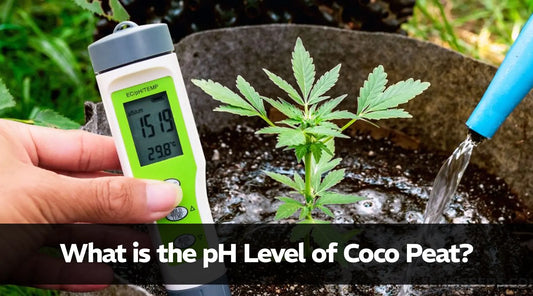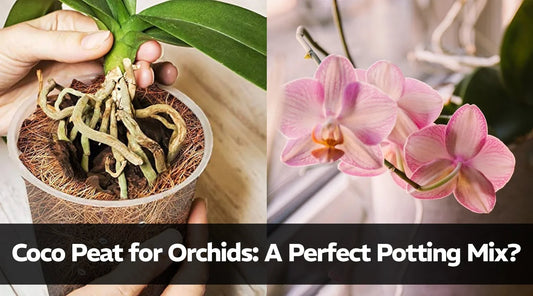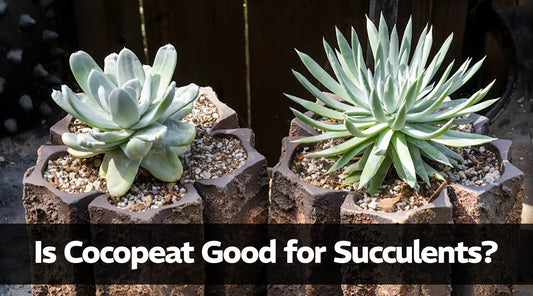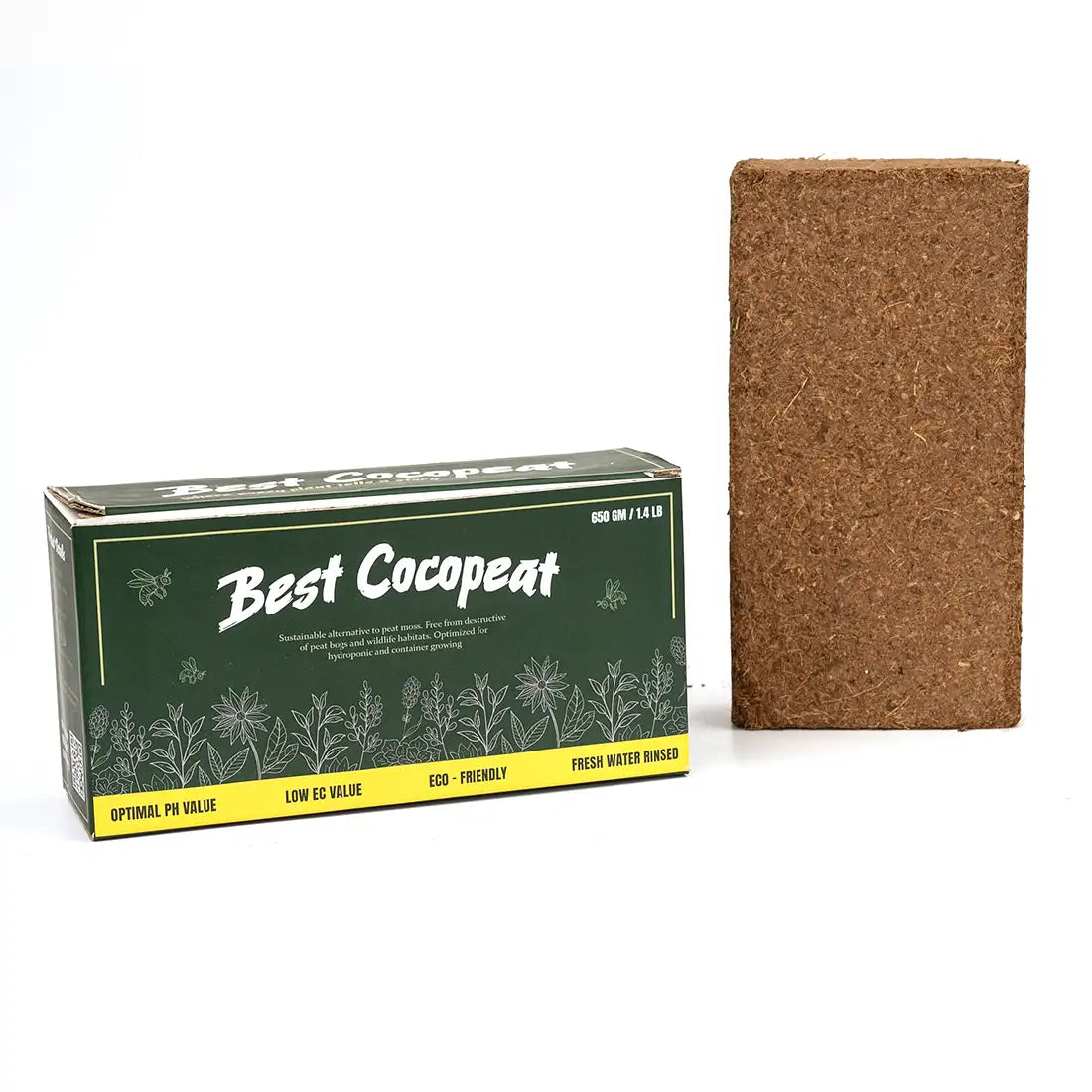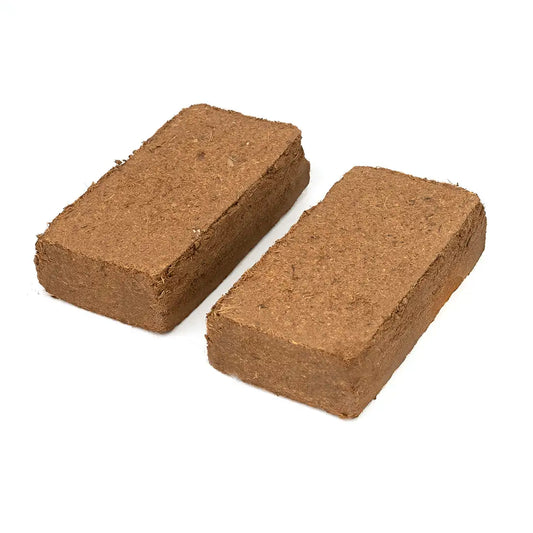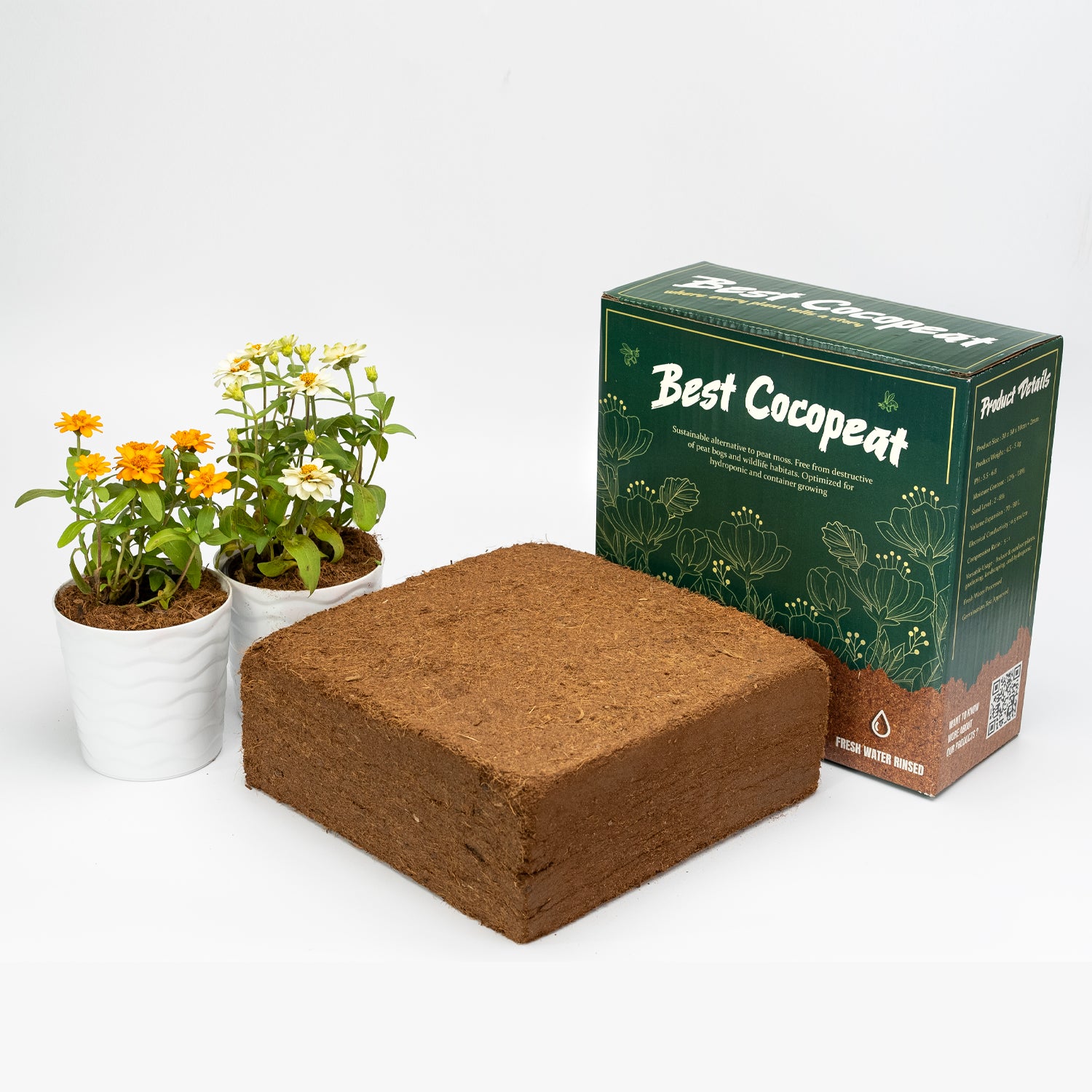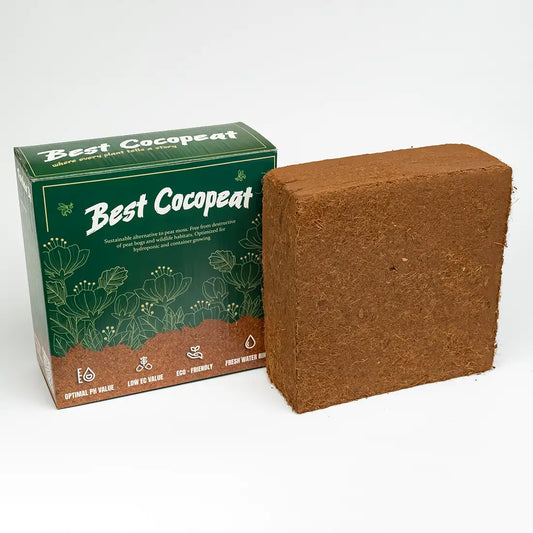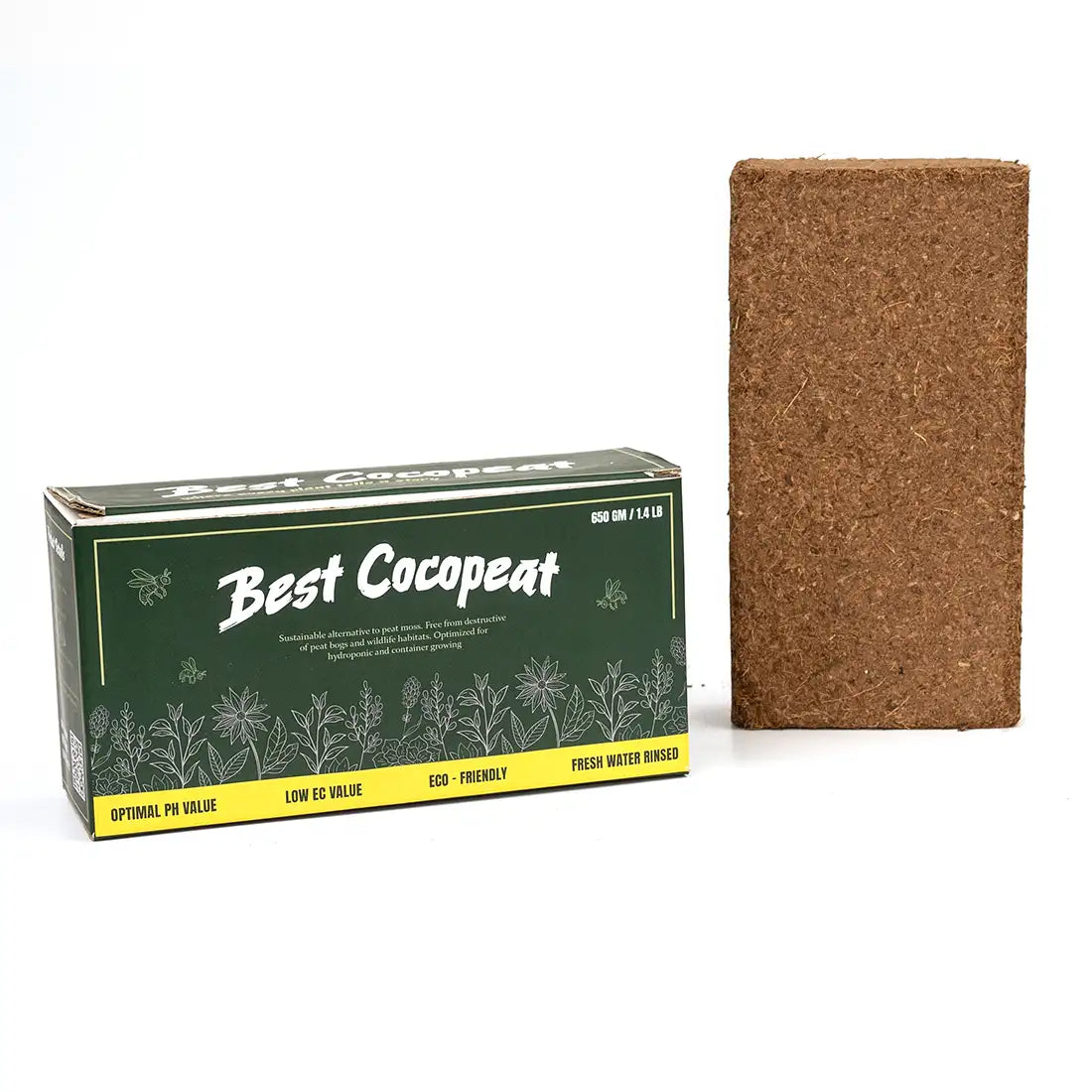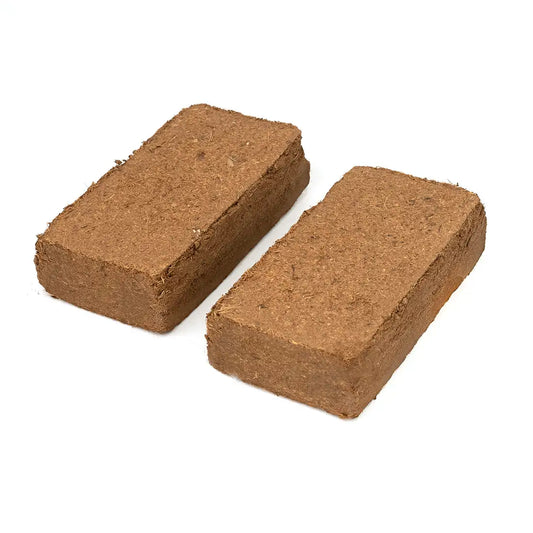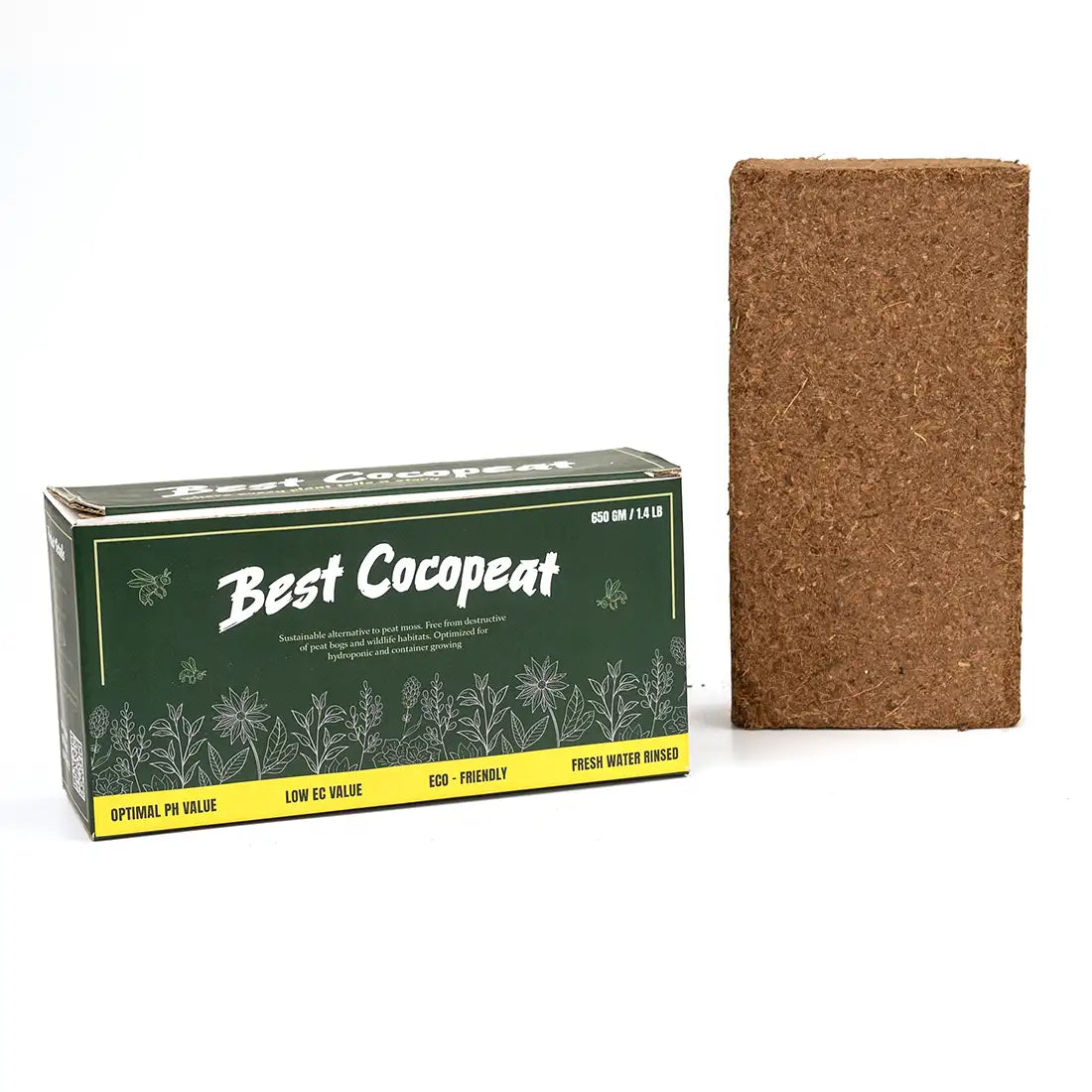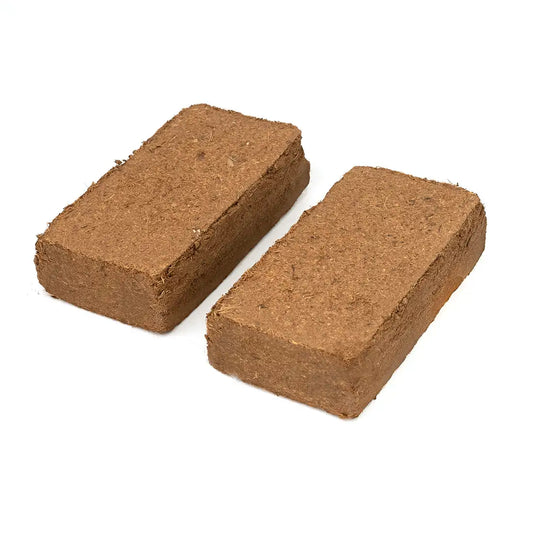Coco peat, often referred to coconut coir brick or coir pith, has become a favoured growing medium for hobbyist gardeners and professional growers, because of its water holding capacity. Among its many benefits, the water holding capacity of coco peat stands out as one of the most important features. Plant health is significantly affected by its capacity to hold onto moisture, which lowers water consumption and strengthens root systems.
This post will explain how coco peat water retention works, why it's important, and how to maximise its use in your garden.
Understanding Coco Peat and Its Water Holding Capacity
The soft material that remains after the fibres are extracted from coconut husks is used to make coco peat. Once dried and compressed, it's commonly offered as coconut coir bricks, which expand greatly when soaked in water. As a result, plants grow on moist, soft, and airy substrates.
Coco peat's amazing capacity to absorb and hold onto water is what separates it from conventional soils. Up to eight or nine times its weight in water can be held by the remarkable coco peat water-holding capacity. To make sure that plants have constant access to moisture, even in arid or warm climates, 1 kg of dry coco peat, for instance, may absorb over 8 to 9 litres of water.
Why Is Coco Peat Water Retention So Important?
Plants need water for optimal growth, but too much or too little water can damage the roots. This is where coco peat really performs. Cocopeat maintains an appropriate moisture level, in contrast to sandy soils that drain too quickly or heavy soils that have a tendency to retain water excessively and cause root rot.Water is efficiently absorbed, retained for long periods of time, and then released gradually to plant roots.
In reality, this suggests less frequent watering, fewer irrigation worries, and more hardy plants. Whether you're planting leafy greens, flower plants, or fruit-bearing crops, regular watering helps boost yields, avoid stress, and support general plant health.
Coco Peat in Hydroponics
The coco peat water holding capacity also makes it a famous medium in coco peat hydroponics framing systems. It is important to have a growing medium that can retain water and nutrients while giving the roots oxygen in hydroponic farming, which does not use soil.
Coco peat is ideal because:
-
The soil retains a lot of water, which keeps the roots continuously hydrated.
-
It drains well, avoiding waterlogging
-
It ensures ideal ventilation for healthy root growth.
For hydroponic growers, coco peat is one of the most efficient and environmentally friendly options because it is challenging to achieve this water-to-air balance with other mediums.
Advantages of Coco Peat Soil Use
Soil performance can be greatly enhanced by including coco peat into your gardening activities, whether in raised beds, pots, or ordinary garden plots. You may make a coco peat soil mix that drains effectively and retains moisture by mingling it with compost, topsoil, or perlite.
With the help of this modified medium, plants may germinate seeds more easily, develop deeper root systems, and stay hydrated for longer without suffering from root illnesses. Plants may survive in coco peat's stable conditions, even in arid climates or hot summer months.
Selecting the Best Cocopeat
To maximise these advantages, choose the Best Cocopeat provided. Pick out products that are free of harmful substances, pre-washed, and have a low salt content. When hydrated, high-quality cocopeat should expand properly and have a pH balance. Quality is important whether you're using it alone or by mixing it with your potting mix.
A compressed coconut coir brick is a practical choice if you're just starting off. It can be used simply by putting it in water and allowing it to expand. For planters of all skill levels, this greatly simplifies handling, storage, and transportation.
Final Thoughts
The water holding capacity of coco peat makes it a natural selection for anyone trying to increase plant hydration and minimise the frequency of watering. Together with superior drainage and root aeration, its exceptional moisture retention creates stronger, healthier plants.
Because of its special qualities, coco peat is one of the most flexible and sustainable soil substitutes on the market right now, whether you're using it in hydroponics, garden beds, or containers. Its natural origin and strong coco peat water retention properties allow it to maintain its position in modern gardening.
From modern coco peat hydroponics systems to cocopeat soil mixes, selecting the right medium is the first challenge. Invest in Best Cocopeat to ensure healthy plants and secure watering.

